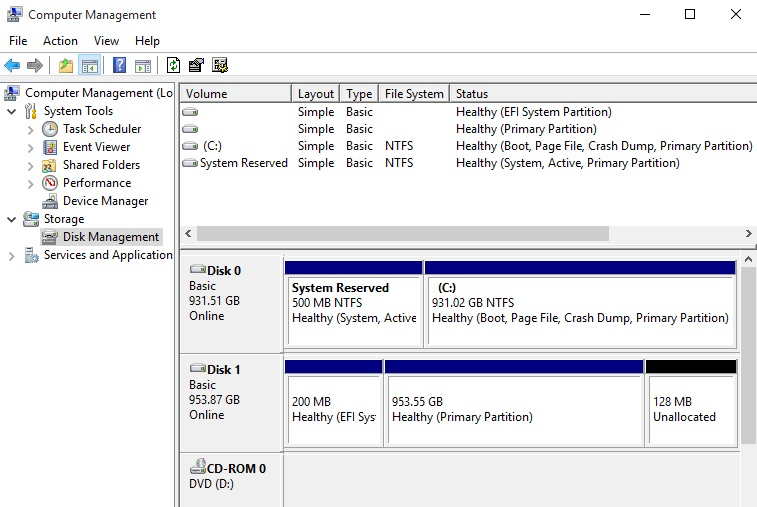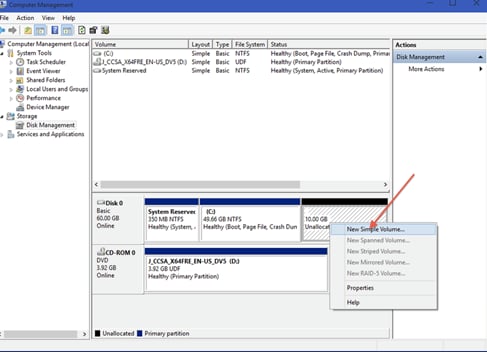

Apple File System (APFS) is a new file system for macOS, iOS, and Apple devices. If you work on a Windows-based computer and want to read and write files on APFS-formatted HDD, SSD or flash drive, you need APFS for Windows by Paragon Software.
The fastest way is via the key combination Windows-X. Select the menu entry 'Disk-Management' 3. Now you can see all hard drives and partitions under Windows 10, 8,1, and MS Server. Click the lozenge-shaped button in the upper-right corner of the window to display or hide the toolbar. View the contents of your volumes with Snow Leopard’s Disk Utility. The volume tree structure on the left of the Disk Utility window lists both the physical disks and the partitions that you’ve set up.

- Download, install and launch the program on your Windows computer, then choose a recovery mode of 'Lost Partition Recoery'. Now, all partitions on your computer will be displayed in the program, including hidden or unhidden drives.
- Download the best bootable partition manager for USB, CD or DVD to partition, format and wipe a hard drive without OS. It is the easiest way to modify an HDD or SSD on a computer without Windows operating system installed, or when the Windows operating system cannot boot.
- New! Supports APFS volumes created in macOS 10.15 Catalina
- New! Detects volumes encrypted by FileVault
The license installs on 3 PCs so you can boost your home setup or make a nice gift to family and friends.
Stable Operation
Fail-safe operability across compatible hardware and software systems for both general-purpose and specialized applications
Data Safety
Tdbgrid refresh. Protection of data integrity and prevention of accidental data corruption and possible loss
Guaranteed Performance
Steady throughput and balanced goodput with effective flow control, reduced overheads, and congestion avoidance
Efficient Use
Resize Windows Partition On Mac
Thrifty usage of processor, memory, and disk resources
Native look and feel
How it Works
Install
Download and install APFS for Windows by Paragon Software
Use
Your drive will show up in Explorer
Features
| Supported Operating Systems |
- Windows 10 (32/64-bit)
- Windows 8/8.1 (32/64-bit)
- Windows 7 SP1 (32/64-bit)
- Windows Server 2008 R2 SP1 (64-bit)
- Windows Server 2012 (64-bit)
- Windows Server 2016 (64-bit)
|
|
| Supported File Systems |
|
| Read-write access |
| When volumes are mounted in the Write mode, you get full access to an APFS volume with the options to edit files, create new files or delete existing files. By using the Write functionality, you accept the terms of this Evaluation Agreement. |
|
| Automount |
| Mounts supported volumes automatically at startup, so you don’t need to bother about it each time you restart the operating system or power your computer on. However, this feature can be disabled at any moment in the program interface. |
|
| Internationalization |
| Supports all character sets supported by your operating systems, including those that use non-Roman characters, so you will never face a problem of not getting access to file names on volumes mounted in non-native OS. |
|
| Support for APFS cloned files |
| Our driver provides limited read-only support for APFS cloned files. You can read, copy and rename this type of files, but not write, modify, create or delete. Find more information about APFS cloned files at https://developer.apple.com/. |
|
| Support for compressed files |
| There are several compression methods in APFS. Our driver supports all of them, except for one that is used for compressing specific system files, e.g. those stored in /.DocumentRevisions-V100/. You can open these files in macOS only. |
|
| Support for APFS containers |
| Our driver can only work with APFS containers residing on a single physical store, other configurations are not yet supported. |
|
| Support for APFS-snapshot enabled volumes |
| APFS volumes that contain snapshots are automatically detected and mounted in read-only mode. |
|
View Mac Partition On Windows 10 Pro
Frequently Asked Questions
| What operations can I do with files? |
| You can view, edit and copy data from storages formatted to APFS. |
|
| Is HFS+ supported in this product? |
| No. If you need to read and write files from HFS+ volumes, download HFS+ for Windows by Paragon Software here. |
|
| Do you have APFS support in other platforms? |
| Sure, you can work with APFS-formatted storages in Linux as well after installing APFS for Linux by Paragon Software. |
|
| Can I write to APFS-formatted disks? |
|
| Can I format and verify APFS volumes? |
| No, these features are not supported in current version. |
|
| The product doesn’t run on Windows 7 SP1. |
| Please install this additional update for Windows 7 (KB3033929): x86 version, x64 version. Make sure that Microsoft Visual C++ 2015 Redistributable Update 3 RC is also installed on your computer. After that open Control Panel -> Uninstall Program and choose Microsoft Visual C++ 2015 Redistributable -> Change -> Repair. |
|
| I cannot install the product via CLI. |
| Please install Microsoft Visual C++ 2015 Redistributable Update 3 RC and try again. |
|
| My Internet Explorer displays a blank screen instead of the product registration window. |
| Please update your web browser. |
|
| The product registration window requires me to have JavaScript enabled in my Internet Explorer. How can I do that? |
|
| Do you support volumes encrypted by T2 Security Chip? |
| Currently, these volumes aren’t supported. |
|
Read Mac Partition On Windows
Resources
Recover Mac Partition On Windows

Yes, Windows 10 also has a hard disk manager. It is very easy to see the partitioning of the hard disk partitions under Windows 10!
1.) .. recognize the hard drive partition on Windows 10 drives!
2.) .. Format hard disk partition / drives!
3.) .. Assign a letter to the hard disk partition or change it!
If you just bought a new drive and want to split it, for example, you will need to partition it before using it. The Disk Management in Windows 10 is the right tool for the job. Fortunately, you can quickly and easily check your hard drive for partitions on Windows 10.
Description 2020: ►► Step by step dividing, formatting, reducing .. new hard disk!
1.) Detect the hard drive partition on Windows 10 drives!
1. The fastest way is via the key combination Windows-X.
2. Select the menu entry 'Disk-Management'
3. Now you can see all hard drives and partitions under Windows 10, 8,1, and MS Server
(.. see Image-1 Point 1 to 3)
PS:
Very practical if you want to shrink the hard disk partition, or change the drive letter of external hard drives, or USB stick , but you should shrink the hard drive shortly after commissioning Windows, otherwise you have later it very difficult.
| (Image-1) disks partitions on Windows-10 in Disk-Manager! |
Simpler partition creation. When you right-click a volume, you can choose whether to create a basic, spanned, or striped partition directly from the menu.
Disk conversion options. When you add more than four partitions to a basic disk, you are prompted to convert the disk to dynamic or to the GUID partition table (GPT) partition style.
Extend and shrink partitions. You can extend and shrink partitions directly from the Windows interface.
2.) Format the hard drive partition on Windows 10 drives!
Formatting and partitioning on Windows 10 is almost as important as a free writing program !
The old instructions are also suitable for Windows 10:
►► How to format new hard drive, create new partition/volume in Windows 8.1/10?
►► Formatting via the Command Prompt Windows (10,8,1, 7)!
3.) Assign or change a letter to the hard disk partition!
Nicely described:
The instruction is written for Windows 10, but you can apply it to earlier versions of the operating system.
►► In Windows 10 change the drive letter, DVD and USB drives?
►► External drives are not displayed in Windows 10?
Changing the drive letter in Windows 10 is easy, regardless of whether it is an additional partition with e.g. B. is a USB flash drive, or a removable hard drive. For the system partition, drive C, you cannot usually change the letter.
FAQ 89: Updated on: 19 August 2020 20:32 |




